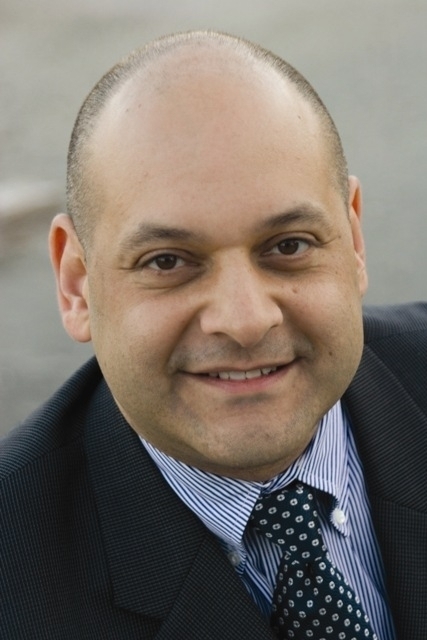
Dr. Jonathan Bertman is clinical assistant professor of family medicine at Brown University’s Warren Alpert School of Medicine and president of Amazing Charts Inc., a North Kingstown-based company that sells an electronic medical record system. Amazing Charts was the top-ranked Rhode Island company on this year’s annual Inc. magazine list of the top 5,000 fastest-growing private companies in the United States, placing at No. 1,143.
PBN: What do you do at Amazing Charts? How exactly does your software work?
BERTMAN: Soon after completing my medical training at Brown University’s family medicine residency program at The Miriam Hospital, I started my own primary care practice in Hope Valley. I knew that I wanted to use an electronic medical record (EMR/EHR) system and reviewed a number of products. I was surprised to find that these solutions were consistently overpriced and overly complex. Clearly designed by programmers and not physicians, they actually hampered my ability to document a patient encounter the way I was trained. I decided I’d build my own system and also offer it online to other physicians, and provide it the way I like to purchase items, namely free to try and cheap to buy.
Amazing Charts is the result. Priced at $995 per provider (and $500 a year for updates and technical support), it is designed to run most aspects of the small and medium-sized medical practice. This includes such routine tasks as patient scheduling, intra-office messaging between staff, documentation of patient visits, electronic prescribing of medications, and generating billing information required to run a medical practice. Amazing Charts also provides physicians with the means to generate practice-wide analyses and compliance reports, which are starting to be required by insurers and government agencies (e.g., pay for performance registry information, patient-centered medical home reports, etc).
Amazing Charts is available to physicians for download and can be used free of charge in their practice for three months to ensure our solution solves their unique needs. Amazing Charts is installed on all the computers in the office, works on off-the-shelf systems, and doesn’t require complex servers or networking. Physicians and staff can also log into their systems remotely to do on-call work or other documentation required when working outside of the physical practice.
In addition to the core functionality of running a medical practice, Amazing Charts also provides practice and patient services. Currently we provide billing services (through selected third-parties) to 5 percent of our clients (at a rate significantly lower than the 7 percent nationwide average); off-site backup services to 25 percent of our clients; and technical support and software maintenance services to 65 percent of our practices.
We are currently developing additional practice and patient services which we expect to be launched in 2010. These include patient visit reminders, practice portals to promote “virtual” office visits, an iPhone app, and others tools to make the practice run more efficiently and with fewer headaches. Nearly all of our new developments and offerings are based on what our users tell us they want. Their recommendations are uploaded to us electronically from within the Amazing Charts software.
Amazing Charts has been purchased by more than 3,000 practices across the country, and we are growing by more than 50 new practices each month. We currently have 17 employees and are located in The Meadows Professional Office Park in North Kingstown.
PBN: Amazing Charts has been around since 2001. Have you noticed a change over the course of this decade in terms of both the emphasis on and the appeal of electronic health records?
BERTMAN: Over the last decade, the concept of electronic medical records has grown from an obscure concept to a household term. Even Wal-Mart, through Sam’s Club, sees the potential for serious revenue and has jumped into the business of selling EHRs to physicians.
But despite the obvious appeal to businesses for its profit potential, the appeal of the EHR to the actual physician remains an issue. Thus far, for example, there is no clear evidence that EHRs improve the quality of care being provided to patients or improve the business efficiencies in the office. And while I personally believe that the right EHR will be shown to do both, the majority of EHR solutions remain overly complex – most actually slow down documentation due to the number of screens and clicks required to get through a note – and ludicrously priced. (Sam’s Club’s EHR offering is priced at more than $10,000 for a solo practice).
So while I’m certainly pleased that my parents now better understand why I took a break from being a doctor to start a software company, I am concerned that the potential benefits of an EHR are being obscured by all the marketing hype and lousy yet expensive products being hawked to unwary doctors.
PBN: What do you see as the biggest obstacle to getting more providers to embrace EHRs?
BERTMAN: Physicians like to make decisions based on research and evidence. Currently there is a significant lack of data supporting the benefits of using an EHR. Sure, they seem like a good idea (other than the very real privacy issues that have yet to be adequately addressed), but the EHR industry is oversaturated with high-priced vendors selling complex and unproven systems that require confusing networks, servers, VPNs, and contact with annoying IT people. For the busy medical practice and its overworked physicians, this is a formidable obstacle.
Government incentives will push many to adopt EHRs, but being cajoled into adopting a tool that actually can slow down office efficiency while costing more than most luxury vehicles is a recipe for failure. And many physicians have already failed in their attempts to adopt a system. We regularly get new clients who have come to us after having wasted thousands of dollars and many hours of time trying to implement a system they picked based on high-powered sales techniques. In fact, it is estimated that more than one-third of all EHR implementations fail. And since most of EHR vendors neither offer a free trial nor a money-back guarantee, the result are disenfranchised physicians, who tell their colleagues about their own misery of adopting an EHR.
Promoting EHR “battles” – where vendors document the same patient scenario in front of an audience, encouraging transparent pricing, and providing a risk-free EHR adoption policy – will improve the speed with which EHRs are embraced and allow competitive forces to lower the price point of these systems to a reasonable level. Having access to unbiased information from colleagues who have already been through the treacherous adoption process is also important. (The Rhode Island Quality Institute is currently working on providing such a forum.)
PBN: As you noted, Washington is putting a big emphasis on the adoption of EHRs. There was money in the stimulus package for them, and health care reformers are hoping they will produce savings to help pay for expanded coverage. What are your thoughts on how EHRs fit into all this?
BERTMAN: As a physician and the owner of an EHR company, I will certainly benefit from the billions of dollars earmarked for EHR adoption. As a conscientious citizen and taxpayer, I don’t like it one bit.
The American Academy of Family Physicians, for example, provides a Web site where members already using an EHR can rank their own system based on quality, price, support, ease-of-use, and impact on productivity. Despite being one of the lowest-priced solutions on that Web site’s list of 91 vendors, Amazing Charts is currently rated the top EHR.
While this is obviously terrific for our company, it is a clear indication that EHRs don’t have to cost $10,000 to be any good. (In fact, what is really fascinating is that in general, the higher the cost of the system, the lower the overall rating.) Unfortunately, if the government is providing the money for overpriced and underperforming software, this only serves to delay the ability for competition and market forces to do what they do best – namely separate the wheat from the chaff.
PBN: With Amazing Charts making Inc.’s list of the 5,000 fastest-growing companies in America, how are you feeling about your prospects for growth over the next five years?
BERTMAN: The 277 percent sales growth that made us as the “fastest-growing company in Rhode Island” is very exciting, but I think the next five years have the potential to be even more dramatic. With only 30 percent of physicians in the United States currently using an EHR, there are a tremendous number of potential clients just waiting to be shown the right product at the right price. My goal is to show them Amazing Charts. •












